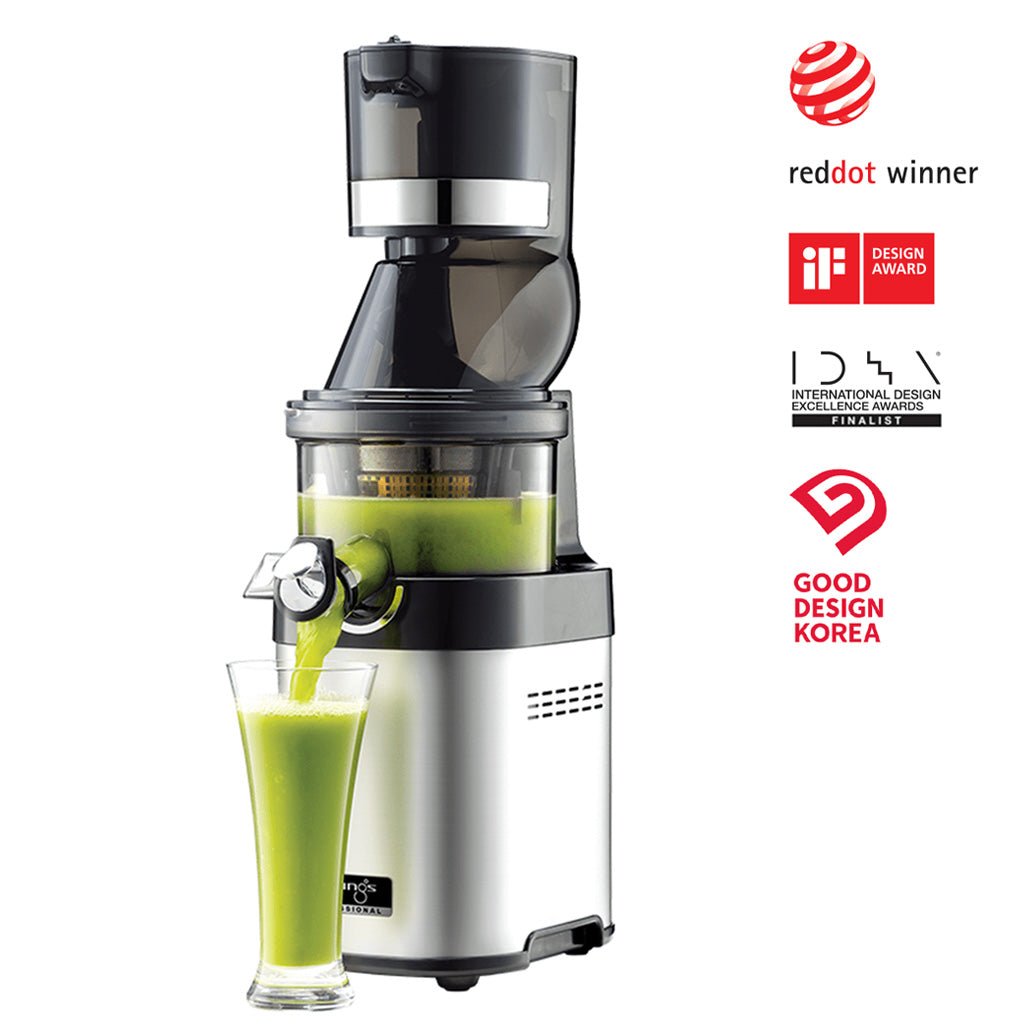[ Telegraph ] The best juicers of 2023 for juicing fresh fruits and vegetables, tested and tried
![[ Telegraph ] The best juicers of 2023 for juicing fresh fruits and vegetables, tested and tried](http://kuvings.de/cdn/shop/articles/telegraph-die-besten-entsafter-von-2023-fur-das-entsaften-von-frischem-obst-und-gemuse-getestet-und-ausprobiert-931245_800x.jpg?v=1741463265)
 Best juicer
Best juicer
1. Kuvings REVO830 "Best juicer overall, 10/10"
The best juicers of 2023 for juicing fresh fruits and vegetables, tested and tried
We test the best juicers from reputable manufacturers, including cold presses and slow juicers - are they worth the extra washing up?
I love starting the day with freshly squeezed juice, whether it's a simple orange juice or a more complicated concoction with all sorts of fruits and vegetables. It's a great way to get one of your five daily meals, provided you don't drink too much juice, which can be bad for your teeth—the NHS recommends a maximum of 150ml per day. The ideal way to avoid expensive store-bought products that may contain sugar is to have one of the best juicers at home.
With a juicer, you can place fruit, often whole or unpeeled, into a container and press it into juice. The pulp is discarded in a container or composted. Juicers differ from blenders in that they extract the liquid rather than blending everything together, while food processors are geared toward preparing raw ingredients—chopping, dicing, slicing, kneading, and so on.
I tested all the latest juicers from major manufacturers to find the best one for your home. You'll find my detailed reviews further down in this post, followed by a quick guide on how to use the machines. If you're in a hurry, here are my top five.
How to choose the right juicer for you
There are two main types of juicers: centrifugal and slow juicers. Slow juicers, sometimes called cold press or masticating juicers, break down the fruit or vegetables into smaller components before mashing them into juice. "The result is more juice is extracted without the internal components generating heat, but at a much slower pace," says Elias Ebert, managing director of iSqueeze, a provider of professional juicing machines for hotels and restaurants.
Centrifugal juicers, on the other hand, have a rotating blade, which squeezes the juice much faster than slower juicers. The downside is that the juice tends to foam and they are less effective with leafy vegetables. Centrifugal juicers are generally cheaper.
Finally, there are citrus presses that do exactly what they say on the packaging. Unlike high-tech juicers, all you have to do is cut the citrus fruit of your choice in half and press the fleshy half onto a rotating press.
The most important thing with all juicers is that they are stable and robust, not too bulky, and capable of producing the required amount of juice. "The juicing process places high demands on the appliance, so it has to be truly robust if it's going to be used daily at home," says Ebert. Spending a little more money can pay off in the long run.
How I tested the best juicers
I ran a variety of fruits and vegetables through the juicers to test their ability to handle both soft and hard ingredients. I used large pieces of fibrous vegetables like celery and carrots, whole if possible, to see how quickly and smoothly each machine could process them. I also paid attention to how loud the machines were, how easy they were to assemble and disassemble, and how simple they were to clean.
How do I clean my juicer?
Generally, juicers have some parts that are machine washable and others that aren't. However, they're relatively easy to clean by hand. Most come with a small brush for removing larger debris stuck to the strainer, and a thorough rinse under running water or a light scrub is usually enough to completely clean the dirtiest parts.
Article from www.telegraph.co.uk/recommended/home/best-juicers1





![[ The New York Times ] Kuvings Entsafter - Eine Investition in die Gesundheit - Kuvings Deutschland](http://kuvings.de/cdn/shop/articles/the-new-york-times-kuvings-entsafter-eine-investition-in-die-gesundheit-5051352.jpg?v=1763482421&width=1080)
![[ Kuvings ausgezeichnet ] Präsidentenauszeichnung für regionale Innovation in Südkorea - Kuvings Deutschland](http://kuvings.de/cdn/shop/articles/kuvings-ausgezeichnet-prasidentenauszeichnung-fur-regionale-innovation-in-sudkorea-1602687.jpg?v=1762447229&width=1080)











